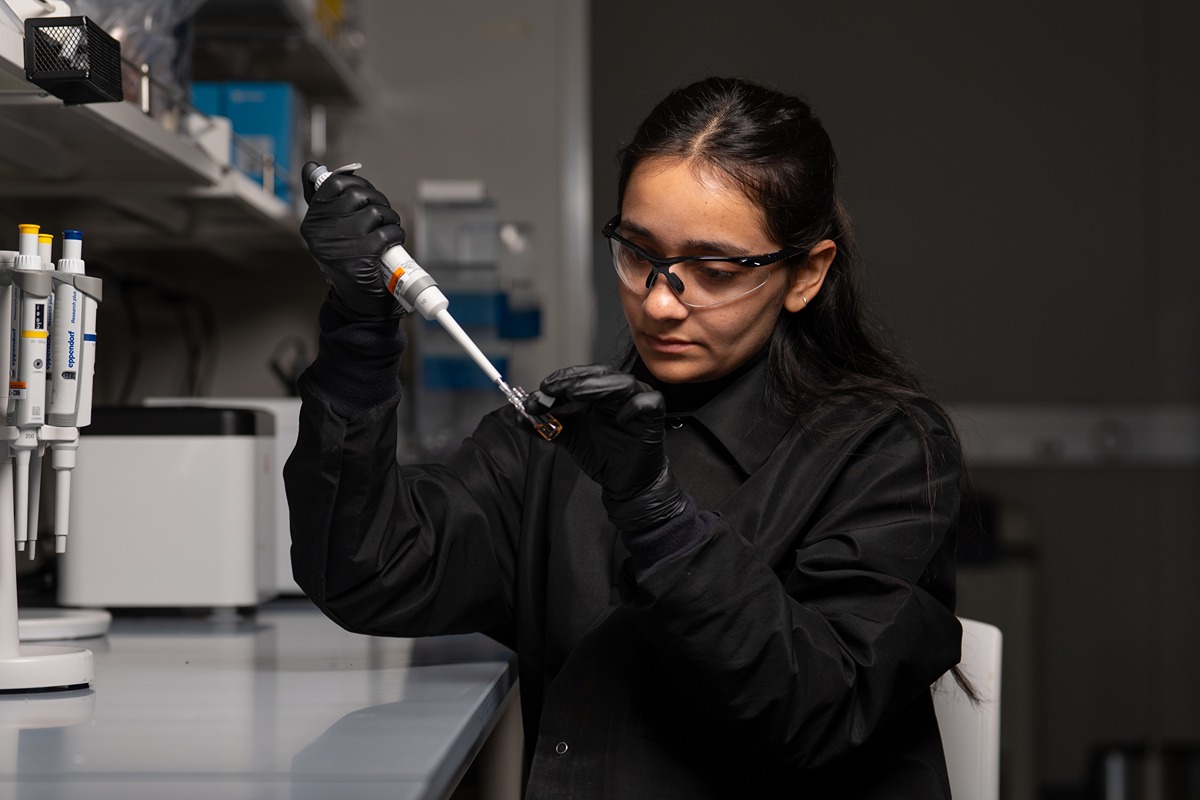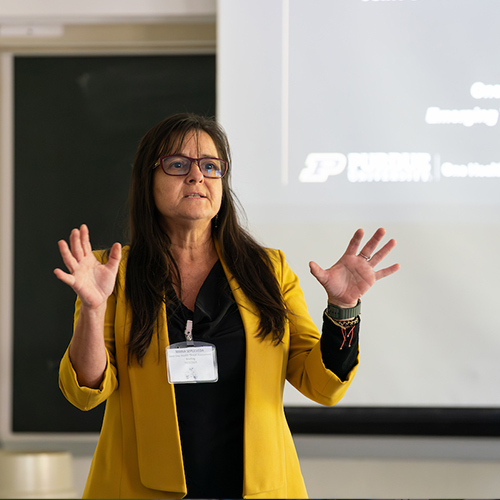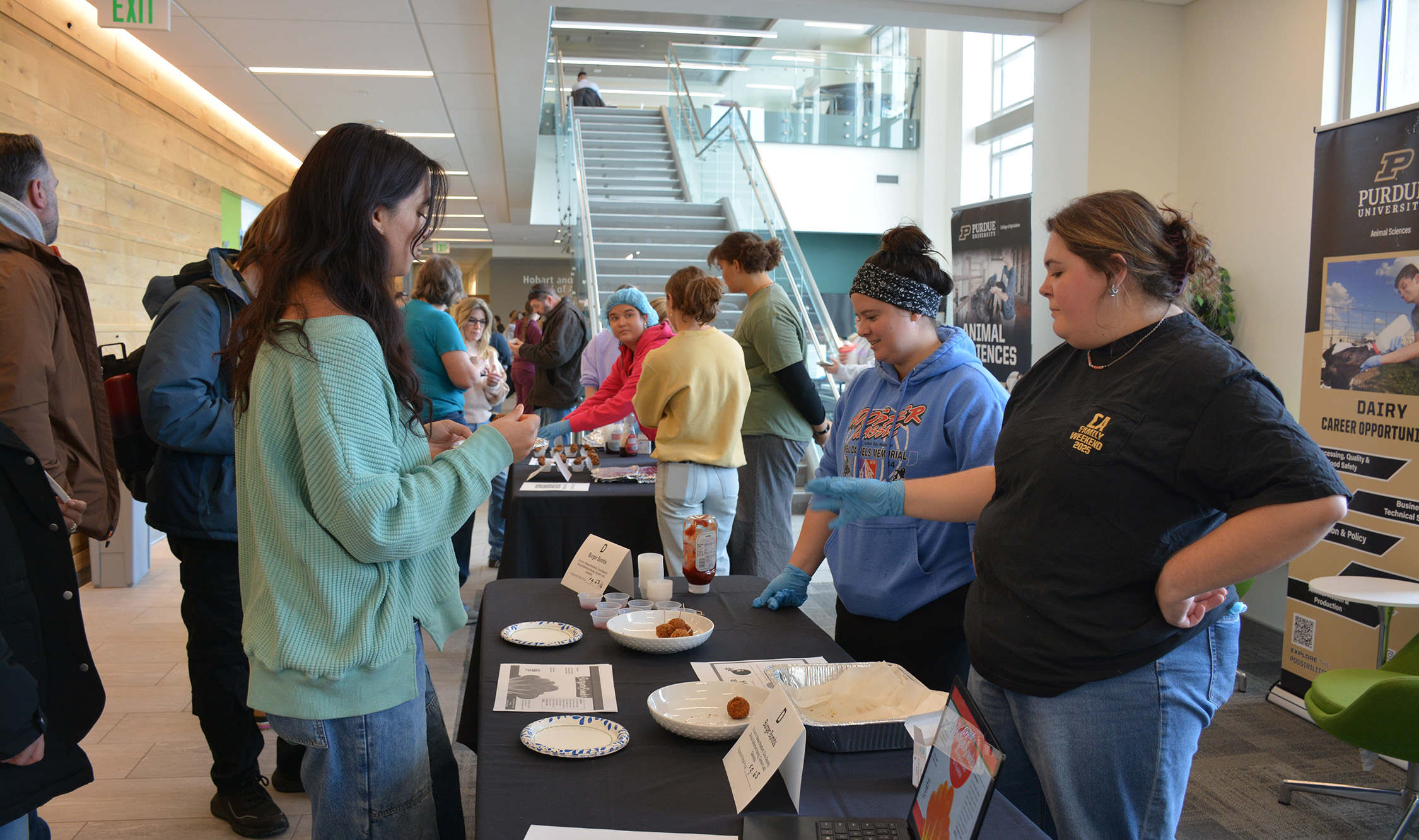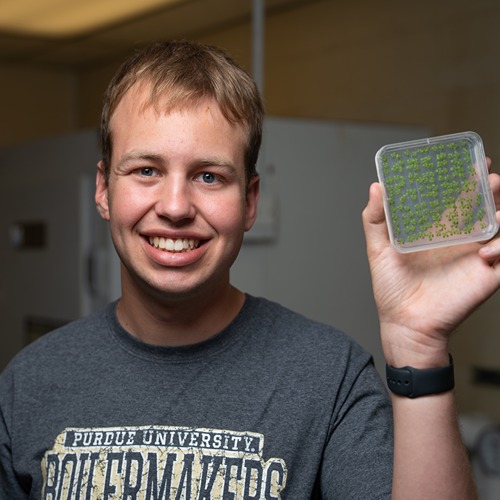Purdue researchers show common bacterial assay is unreliable
As food recalls become more prevalent, families are tossing more lettuce and deli meat into the trash. This food waste is a requirement to keep people safe. But what if there’s a chance the tests determining bacterial content are unreliable, leading to false positives—creating more food recalls and fear than necessary?
To detect contamination on food or infections in animals, scientists use tests that look for genetic material, like DNA. These have revolutionized diagnostics and risk-assessment tools, but they cannot tell whether that DNA came from living or dead bacteria.
“When you get a sample from the environment, it has a mix of living and dead cells,” Simerdeep Kaur explained. “So, a positive result could mean that the environment is currently contaminated, or maybe there was a past contamination that is no longer there but the DNA survived—DNA is a very stable molecule and can stay in the environment for days or even years.”
Kaur, a PhD student in Associate Professor Mohit Verma’s agricultural and biological engineering lab, recently published a paper about how propidium monoazide assays (PMA)—the solution many labs have used to differentiate between living and dead cells—are currently inaccurate but could be improved upon for the future.
“We were surprised by the results because the PMA-based method has been used for years and people have found conflicting results, but nobody made the claim that we did,” Verma said.
Theoretically, the orange-colored PMA dye binds to DNA and blocks it from being amplified. This should only occur in dead cells that have degraded, since the dye struggles to pass through intact cell membranes.
With PMA, only the DNA from living bacteria is amplified. When scientists run polymerase chain reactions (PCR)—or specifically the loop-mediated isothermal amplification (LAMP) in Verma’s lab—the living bacteria’s DNA multiplies enough in the sample to be tested while the dead bacteria’s DNA is suppressed. This should reduce false positives.
“When you have a false positive, you take measures that are not needed,” Kaur said. “In food safety, this can mean massive recalls—throwing out produce and wasting lots of food when it is not actually contaminated.”
In Kaur’s recent research she discovered PMA dye actually starts to infiltrate living cells if there is not enough dead bacterial DNA. Or, if there are too many dead cells in the samples for the PMA dye to cover, then some dead bacterial DNA would still be amplified in the end test.
Kaur also tested how PMA worked on different strains of bacteria common in real-world samples that can cause food-borne illnesses: E. coli, Salmonella and Listeria. She found that the PMA dye performed differently for each type of bacteria, as some were more sensitive to PMA and thus more suppressed after amplification than others.
In this study, Kaur concluded that, “because there is no right concentration of PMA, it is not reliable for quantitative analysis.”
Verma said, “Live-dead quantification continues to be an issue, and we are hopeful that better methods will be developed based on our findings.”
However, the PMA still increases the accuracy of DNA tests for bacterial contamination, so Kaur is working with several companies to help improve their diagnostic measures. For her, food safety is a science that is worthwhile for its impact on human health and also for the complexity that allows her to creatively tackle these problems in the field.
This research is a part of Purdue’s presidential One Health initiative, which involves research at the intersection of human, animal and plant health and well-being.






